Bridges connect the world; without them we would not have much transportation infrastructure.
They connect communities over rivers, lakes, valleys and many other obstacles that may be encountered. The bridge is a symbol for prosperity and communication between cities, countries and continents.
In this blog we discuss the 2.7 kilometer long Golden Gate Bridge, a famous bridge in San Francisco.
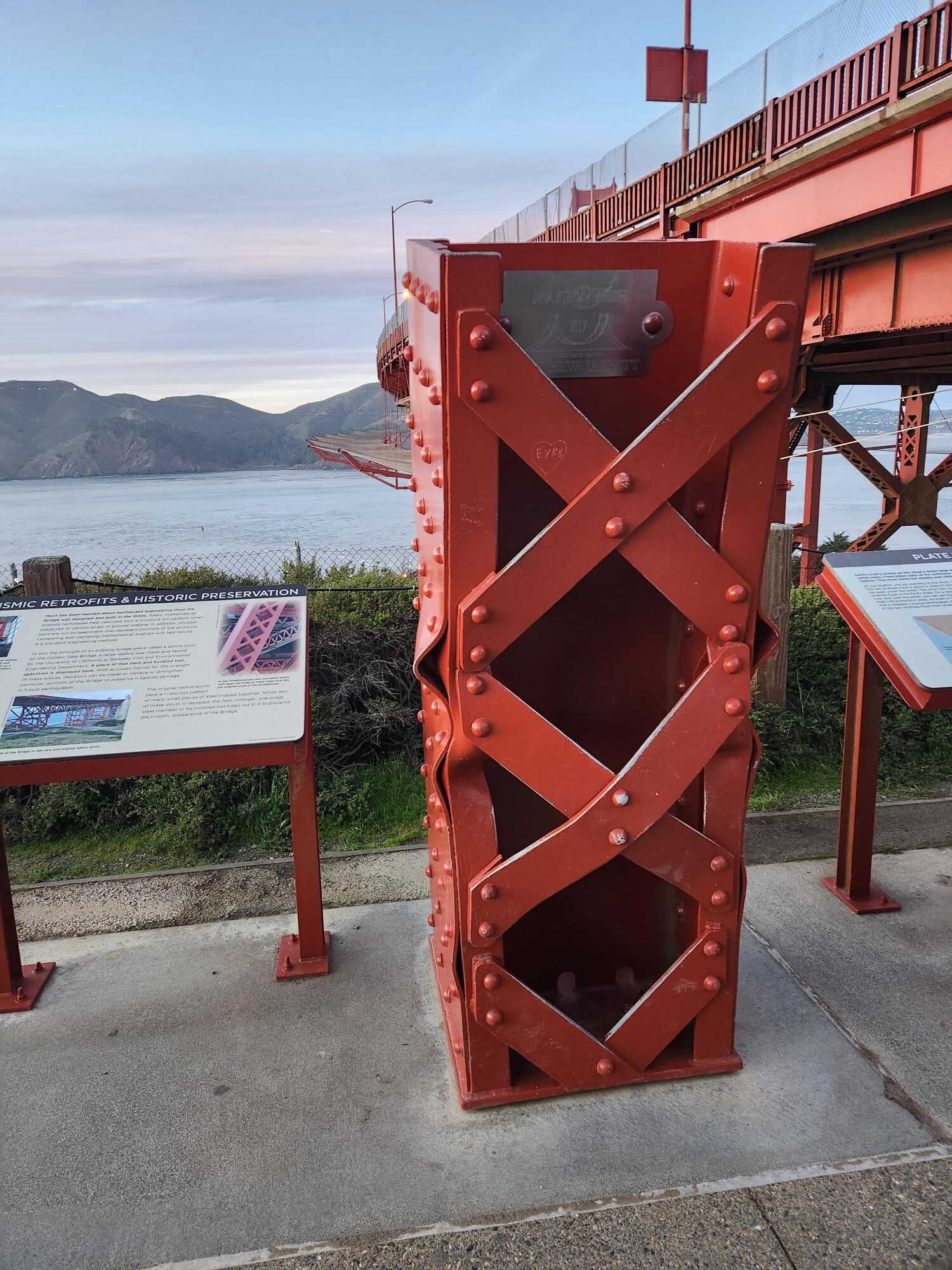
The Pacific Coast is a rugged region full of mountain ranges, gorges and mighty rivers. All of these present major issues when building roads and other civil infrastructure projects. The City of San Francisco has a distinct geography which presents a lot of complications when it comes to getting around and transportation.
Back before the Golden gate was completed in 1937, getting around the city by car from one side to the other was a major ordeal. The roads where difficult to build in the hilly terrain of San Francisco. This made a trip from the south end to the north end of the city an all-day event. You could take the ferries to various points around the city but you would face major congestion and line ups for the ferry. Everyone wanted to take their cars on the ferry to avoid the long trip around the entire city. Thus, a bridge was need and this is how the Golden Gate came to be.
Without the bridge there was no direct access to the north shore of the city to places such as Sausalito, Tiburon and Mill Valley from the downtown. If you wanted to go up to the north part of the city than you would have to take a circuitous route around the entire city. This typically took a few hours and this is not accounting for fluctuations in traffic and weather. Even back than San Francisco had a big population and lots of traffic. This has been the case since the days of the gold rush when it became a major port for those accessing the California Gold fields.
The trip would take a few hours for just one way as well as needing to travel home after a day out in the city. This was a nuisance for the city’s residents and something that was fixed directly by the construction of the Golden Gate Bridge. Having a direct route that cut across the bay connecting the north shore would improve transportation immensely and take strain of the ferry system.
Construction of the bridge began on January 5th, 1933, and would become one of the most famous projects in the United States of America. The bridge has become an icon and is known throughout the world for its engineering accomplishments. Its appearance is instantly recognizable and it has been a symbol of prosperity since it conception.
Built at a difficult time economically, the bridge provided jobs and a well need boost to the local economy. This bridge was a demanding project that would require many resources, man power and knowledge to complete. At the time, the bridge engineers were attempting things that other engineers thought impossible. Now, this is not a new instance, the White Pass and Yukon Railway was also deemed by many engineers to be impossible to complete. Both would be completed and presented new methods and ideas for engineering and constructing infrastructure.
Engineering and construction of the Golden Gate Bridge was a huge undertaking. This was the age before computers and modern technology. All of the calculations would need to be done by hand by engineers to determine suspension cable size, lengths, bridge materials, bridge deck composition and many other factors. The architectural and construction drawings would be drafted by hand using rulers and various geometric tools. They did not have the modern luxuries of AutoCAD or engineering software.
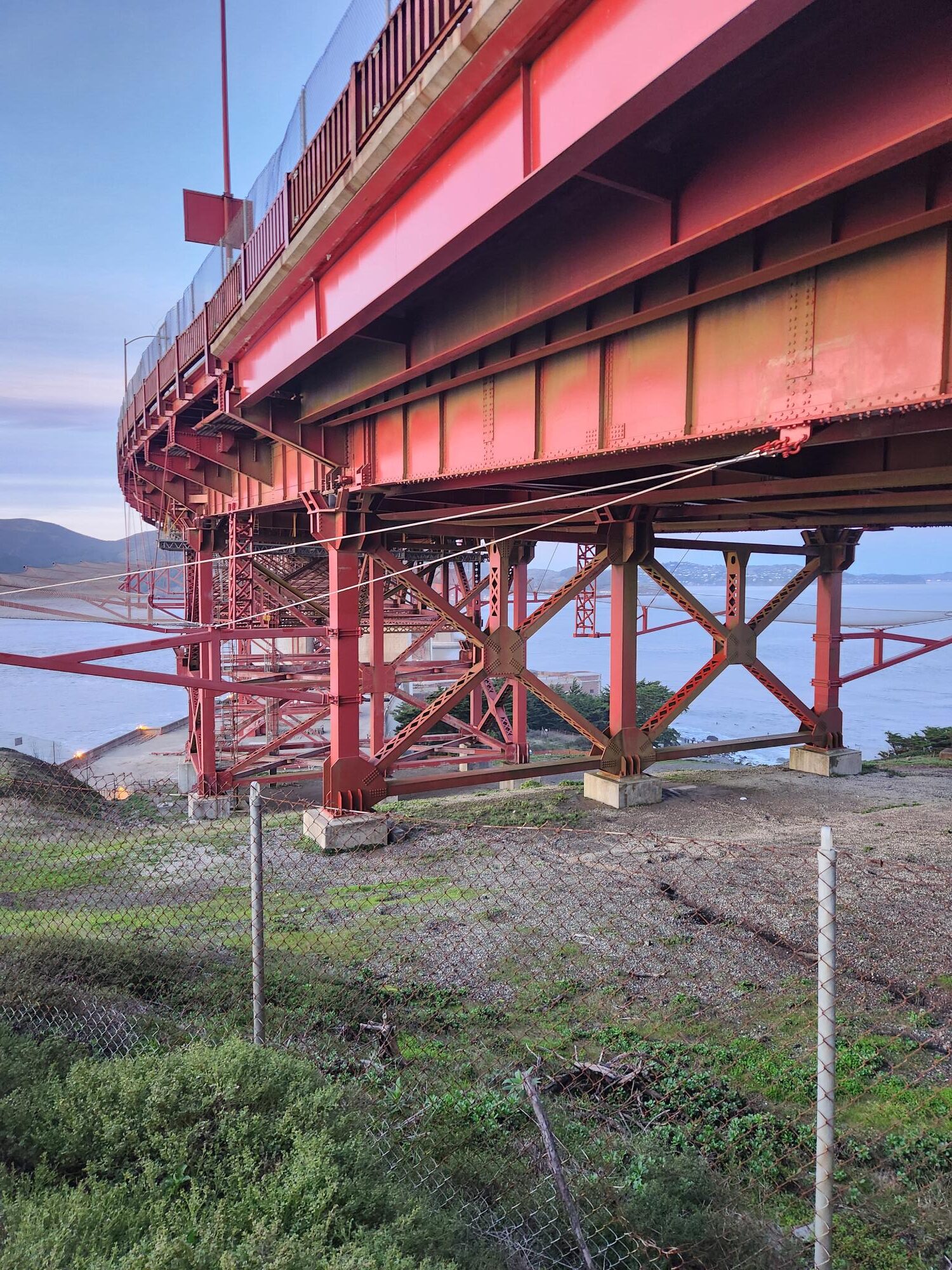
Joesph Strauss the lead designer of the Golden Gate hired University of Illinois Professor Charles Ellis and bridge designer Leon Moisseiff to help design the bridge. They were responsible for engineering the bridge, Leon Moisseiff was a leading structural designer in suspension cable systems and would have valuable knowledge to help design the bridge suspension system. Charles Ellis would perform the complex calculations required for various components of the bridge.
The initial design was cumbersome and complex, it was based on the designs of bascule bridges such as the Tower bridge in London England. It was not very well received and was thought to not be feasible to construct. Irving Morrow was a local San Francisco architect that would design the Golden Gate bridge that we know today. Morrow would also be responsible for selecting the colour of the bridge. International Orange was the paint used for the bridge steel and would be selected as it was thought to better blend in with nature and be appealing to the eye.
A suspension bridge design would be used to span the bridge over the long distances required. It would use tension and compression to distribute loading throughout the bridge. The towers would support the weight of the bridge, deck and cables while transferring forces through compressive loads down the towers into the deep pile foundations in the earth. The suspension cable system uses tension to transfer loads horizontally across the length of the bridge to abutments at both ends of the bridge. At the abutments the tensile forces are transferred into the surrounding ground foundations. This is the basis of how the Golden Gate suspension bridge works.
The tower provide the main support structure for the entire bridge and is part of the iconic look of the bridge. Due to the high winds and design requirements of the environment, the tower sections of the bridge have a hollow honey comb like structure to reduce their weight and allow for movement between members. At 746ft high the towers are strung with 80,000 miles of cable, all of which is responsible for supporting the entire bridge.
Building of the Golden Gate was dangerous and required many trades to construct. Piledrivers would drive piles in over 300ft of water down into bedrock to secure foundations and abutments for the bridge. Ironworkers to erect the bridge towers and cables over the water and link the north and south sides together. The challenges these men faced were immense and there were major safety concerns.
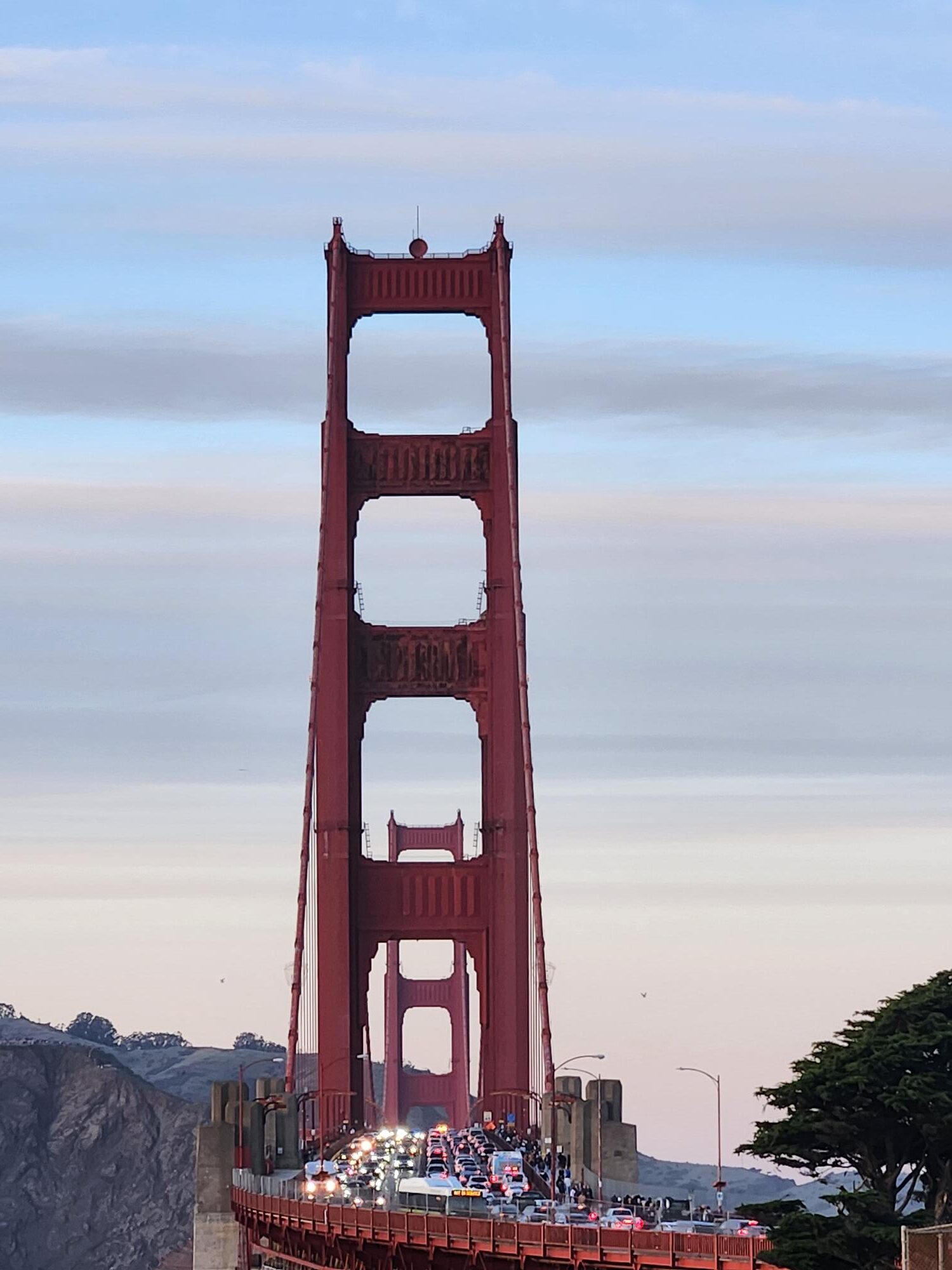
The Golden Gate bridge project saw incredible safety improvements with the implementation of leather hard hats, fall arrest nets and ventilation systems. At the time these where huge innovations in the industry and saved a lot of lives on the project. Rivet gangs making connections to bridge steel where getting sick from lead paint burning and poisoning workers. They were provided masks and ventilation systems where set up in the tower sections. Safety lines and fall nets where used to help men walking the steel and erecting the cables if they were to fall. The Halfway to Hell club was a famous club of ironworkers who fell into the net and survived. These where all huge improvements to safety on bridge construction projects and saved many lives.
During work the men on the bridge would smell beans, soup and food cooking below them. This was unemployed men lined up outside the site waiting for a job opportunity to open up. It was hard times and many people needed work, the prospect of getting a job after an accident or death was a real possibility. Walking high above on the steel, men had to watch every move they made.
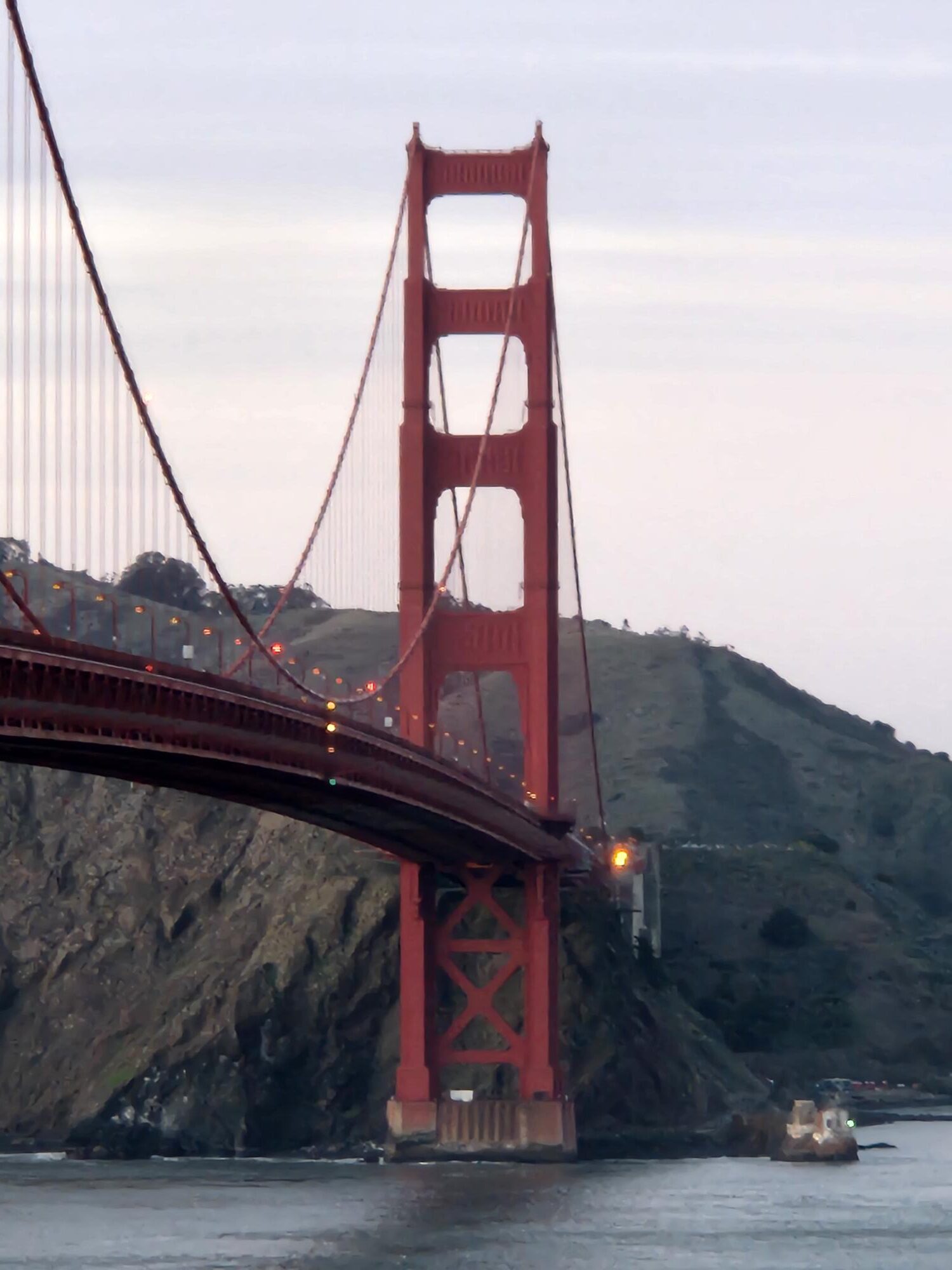
Once the bridge was completed on April 19th, 1937, it changed the landscape of the city forever. Transportation in the city expanded considerably and commerce would grow as a result. Residents where joyous and celebrated on opening day. It was a new era for San Francisco and the bridge has since become world famous for it character, design and appearance.
Driving across it you can’t help but feel inspired and in awe of how the bridge was built when it was. The hard work and dedication of all involved shines through in all aspects of the bridge. It is a civil engineering landmark and modern wonder of the world.
Bridges are amazing pieces of infrastructure; it is hard to imagine a world without them.

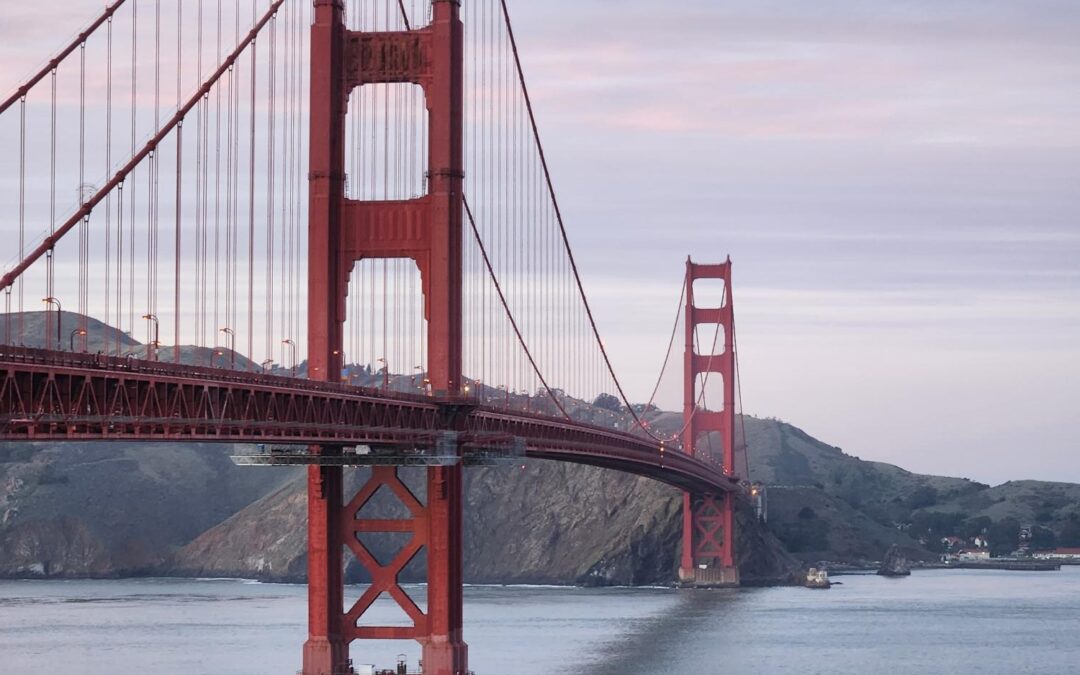
Great blog. Nice pictures too. The most iconic and beautiful suspension bridge in the world in my opinion. Truly exceptional how it came to be. Great read, thanks